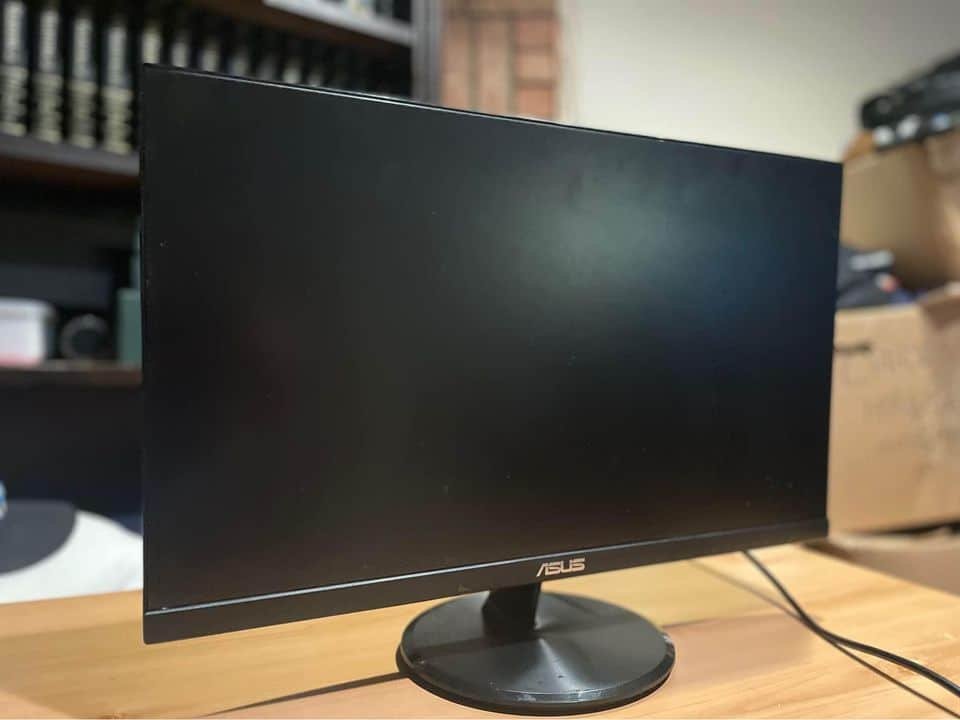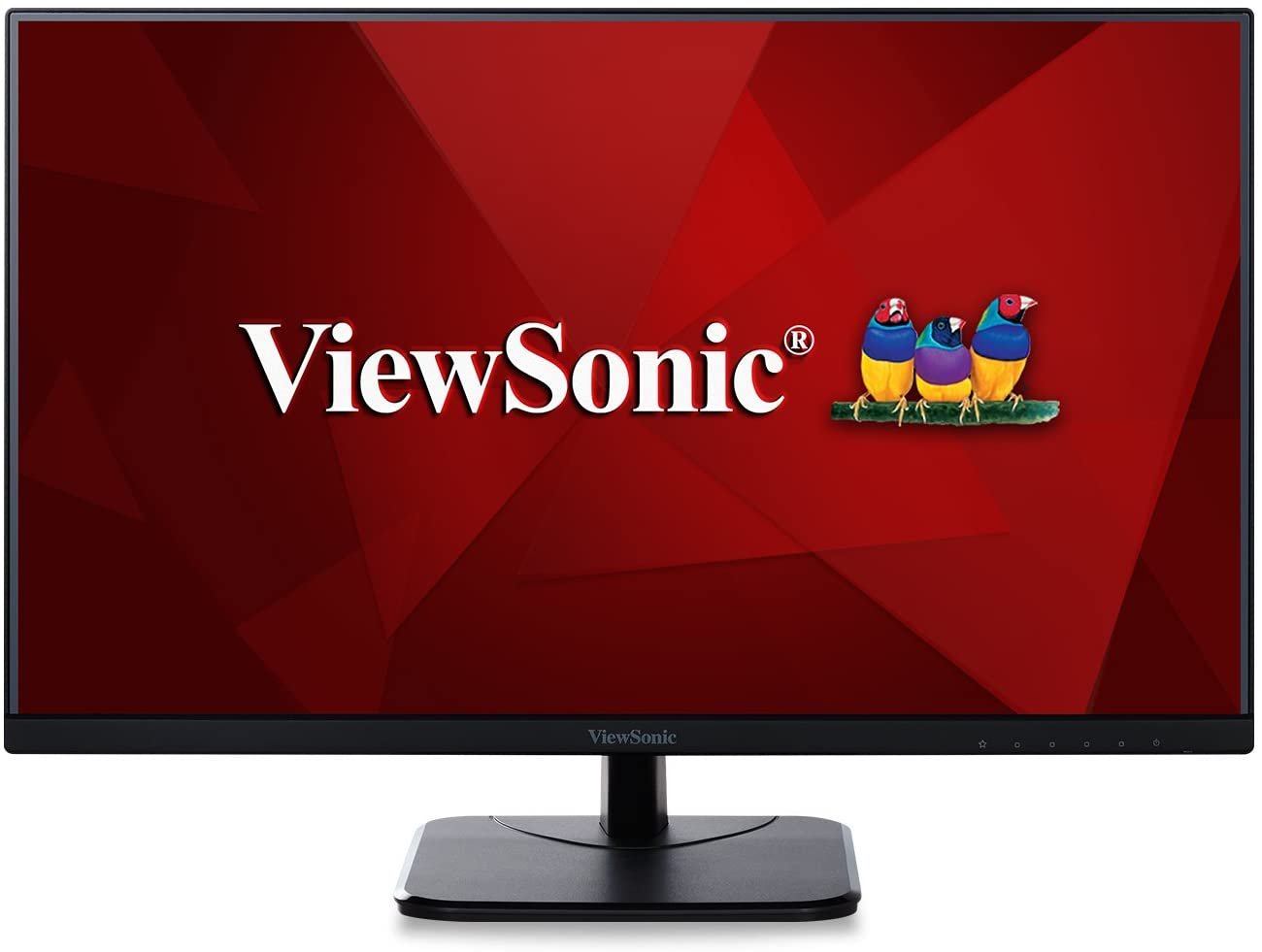The 27 inch vs 24 inch monitors debate is very popular in the gaming and business community. Monitors aren’t exactly cheap, and for this reason, most people can’t afford to replace them often.

This is why it’s such an important task to find the ideal monitor to suit your needs; so you don’t end up stuck with an incompatible monitor for a long time.
How can you determine the ideal monitor? There are many factors and features to consider before making a choice, and their importance varies depending on what tasks you hope to accomplish with them.

The 27-inch and 24-inch monitors are the most popular choices today. Their relatively compact size means they’re perfect and convenient for use as a personal computer.
Deciding between a 27-inch and a 24-inch monitor is a significant determinant of your future gaming, viewing, or work experience.
How can you know which monitor size is right for you? What factors should you consider? And how do they stack up against each other?
We’ve researched and compared the two most common monitor sizes to help you decide.
Understanding monitor sizes
Is a bigger monitor always better? Not quite. To understand the differences between these two sizes, we first have to talk about monitor sizes.
24 inches and 27 inches refer to the size of the LCD panel rather than the monitor itself. Although it seems to be vertical and horizontal, this inch represents the display’s diagonal length.
Monitors are measured diagonally, not from top to bottom or left to right. Regardless of the aspect ratios, this diagonal dimension is accurate across all screens, including TVs and computer monitors with different screen sizes.
An inch equals 2.54 cm. When the monitor size is increased by an inch, it grows by 2.54 cm diagonally.
27-inch Monitors
A 27-inch monitor measures 69 cm diagonally and is slightly bigger than a 24-inch monitor. This screen size is preferred by gamers, multitaskers, and creatives who require extra real estate.
24-inch Monitors
A 24-inch monitor measures 61 cm diagonally and is a very standard size. This screen size is appropriate for basic tasks like web surfing, word processing, and spreadsheet work. Even the biggest laptop screen pales in comparison to a 24-inch display.
27 Inch vs. 24 Inch Monitors Comparison
Size
A 27-inch display has 25% more space than a 24-inch monitor. Photo/video editing, gaming, multitasking, and reading all benefit from the extra space.
Multitasking is simpler with larger displays since they allow users to place multiple windows side by side. They’re a fantastic alternative to using two monitors.
The diagonal difference between the monitors is around 7.5 cm when placed side by side. It might not seem evident initially, but the difference is apparent when placed closely in front of you.
Resolution
24-inches is the appropriate fit for 1080p. The Pixels are large enough to display vibrantly and clearly from any acceptable distance, while the display is also tiny enough to display vivid images and clear text.
When you compare the images from a 24-inch 1080p monitor to a 27-inch 1080p monitor, you’ll find that the 27-inch monitor appears to be a little rough, but it’s a minor difference that you can only detect up close.
The difference in image quality will be obvious if the size difference is larger, such as when comparing 24-inch and 32-inch monitors. Still, you won’t have to worry too much if you compare 24 inches and 27 inches.
A high-quality monitor with 1440p or 4K resolution is appropriate for the 27-inch size. However, higher-resolution displays for 24-inch monitors are also available.
Still, a 24-inch screen is ideal for gaming because it keeps all relevant action in your field of view while not tasking graphics cards as much as a 4K screen would.
Distance
The 16:9 aspect ratio of 24-inch monitors provide enough workspace in the middle of the screen from a comfortable distance of approximately 45cm, with about two inches 5cm on either side of the primary productivity area for menus and other peripherals like notification areas and similar.
The workspace grows a little bigger at 27 inches, so grasping the full screen at the same distance becomes a little more challenging.
Essentially, with a 24-inch monitor, you can (or you need to) sit closer to the monitor, and with a 27-inch monitor, it’s ideal to sit further away from the monitor.
Cost
If the specs are similar, 24-inch monitors are cheaper than 27-inch monitors. Varying specs may cause prices to differ, however.
Installation
The 24-inch is more straightforward to install because it is smaller. Because the 27-inch is broader, it requires more depth to be seen.
Furthermore, the stunts become somewhat larger in proportion to the size, which may take up desk space.
Also, it is not as easy to install a 27-inch monitor since it depends on the desk’s size. If the depth is insufficient, you may give up and make it 24 inches deep, use a monitor arm to float it in the air, or add a keyboard slider.
If you need help choosing a monitor desk, take a look at these.
Verdict
The optimal display size is determined by the monitor’s resolution, the purpose for using it, and the distance between you and the screen.
24-inch monitors are reasonably typical for regular office work. It’s a perfect size and price compromise.
You might choose a larger monitor for other programs that demand a more extensive interface (video/audio editing, graphic design, etc.) so that you can have many application windows open at once.
Higher resolutions are better on the 27-inch screen, and 4K resolution is better for photo and video editing.
Lower resolutions are better on the 24-inch screen, and 2k resolution is typically faster and less tasking on computers, making it better for smooth work and fast gaming.
Because of these factors, it isn’t easy to rank one size above the other. Their suitability depends on your needs.
27-inch Recommendation
The Asus ProArt Display PA278CV is our Recommendation for a 27-inch monitor.

The Asus ProArt Display PA278CV features all of the connections you’ll need to connect your desktop or laptop PCs, as well as a great-looking panel with sufficient color accuracy for most users.
The PA278CV’s stand can tilt, rotate, pivot the screen or raise and decrease the screen’s height, and it has a USB-C connector that can charge most 13-inch laptops. It also has a three-year guarantee and a decent dead-pixel policy.
ProArt displays have an E<2 rating, which means your pictures will be correctly replicated on-screen, allowing you to preview how your work will look when it’s done.
The monitor’s resolution is QHD (2560 x 1440), meaning it isn’t as crisp as a 4K monitor but is also less expensive than comparable 4K displays.
You can also take advantage of the ASUS-only ProArt Preset, which offers various settings for fast color-gamut adjustments. Whether color grading, video editing, or modifying photographs, you can adapt and match your demands.
The ASUS QuickFit Virtual Scale feature adds a grid to the screen, allowing you to align and examine documents in their proper proportions before printing.
Multitasking is also possible using the monitor’s (PiP) and (PbP) modes, which allow you to examine two separate inputs simultaneously.
Lastly, the monitor has protective eye care technology. It’s flicker-free and has a blue light filter readily accessible through the on-screen menu using the hotkey.
Specs:
- Refresh rate: 75Hz
- Aspect Ratio: 16:9
- Resolution: 1440p
- Weight: 18.52 pounds
- Adaptive Sync: FreeSync
- Connectivity: HDMI, DisplayPort, USB C, USB hub
- Panel: IPS
24-inch Recommendation
Our Recommendation for a 24-inch monitor is ViewSonic’s VA2456-MHD. The monitor is very affordable and is ideal for a myriad of tasks.

The ViewSonic VA2456-MHD’s high contrast ratio results in darker blacks, which allows for good visuals in games, movies, and web surfing.
Rather than having one or the other, it features both HDMI and DisplayPort connectors and VGA input as a bonus.
This monitor’s SuperClear IPS panel ensures that you get the same image quality, whether looking at it from the top, bottom, front, or sides.
This monitor features twin integrated speakers and excellent display quality with stereo sound for a truly immersive entertainment experience.
Its color fidelity is excellent but suboptimal for a professional picture or video editing task. It has an adjustable stand that may be tilted up and down.
According to ViewSonic, the monitor has a three-year warranty and a reasonable replacement policy for displays with dead or stuck pixels.
For an immersive viewing experience, this monitor has an edge-to-edge screen and a frameless design. Flicker-Free technology and a Blue Light Filter reduce eye strain caused by long hours of use.
Specs:
- Refresh rate: 60Hz
- Aspect Ratio: 16:9
- Resolution: 1080p
- Weight: 8.6 pounds
- Connectivity: HDMI, DisplayPort, VGA
- Panel: IPS
Conclusion
You will be forced to lean forward and may develop poor posture if your monitor size is too small.
Comparatively, if it’s too big, you’ll have to sit far from it, allowing items surrounding the display to be seen.
As a result, it’s critical to pick the right size that fits your needs and helps you to focus the most comfortably.
Ideal physical monitor size is determined by what you do, but it is only one thing to consider when selecting a monitor.
Other features like a built-in USB hub and speakers, resolution, viewing angle, and refresh rate are just as important.

